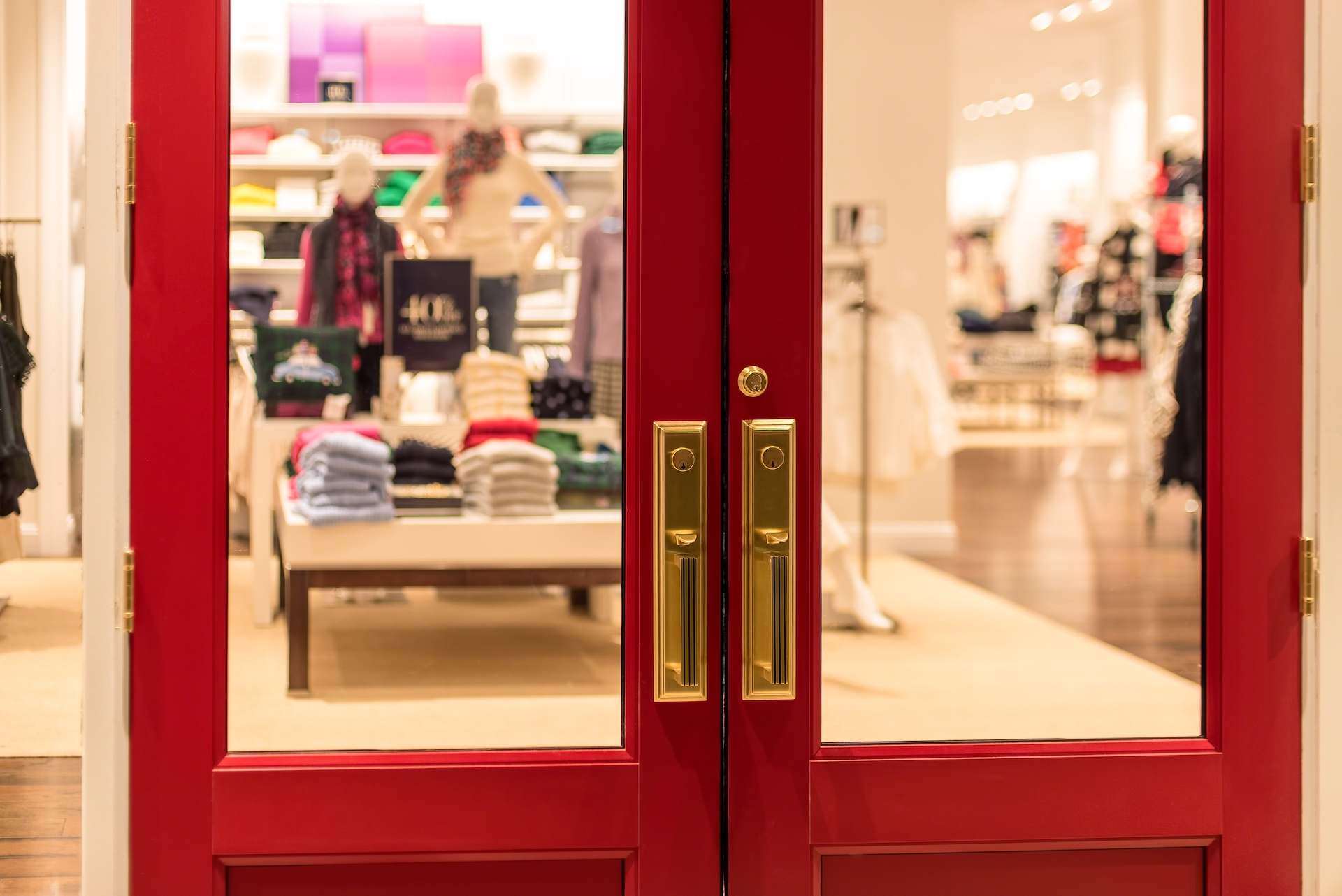It’s no secret that the retail industry experienced incredible disruption over the past year. The COVID-19 pandemic highlighted many areas where retailers needed to change. Ongoing lockdowns, high-street closures and reduced footfall meant that many retail giants struggled. But, at the same time, others thrived.
Now, as we move into a post-pandemic environment, what will 2022 bring for retailers?
From the rise of online shopping and its impact on in-store sales to the increasing importance of technology and security, we spoke to a few retail experts about what those in the industry can expect to see next year and beyond.

Wayne Snyder, VP Retail Industry Strategy, Blue Yonder, says:
1. Focus on reaching ‘Omnichannel Nirvana’
The need to provide an efficient omni-experience was evident in 2021. Those retailers who were able to scale their online business thrived amid continued disruption and as we come out of the pandemic, creating the seamless experience between in-store and online is a must.
Retailers are grappling to evaluate with the right network across a blend of large warehouses, smaller localised fulfilment centres and deliveries from stores. The need is for these to be inter-operable with intelligent decision-making as to how best to move products from anywhere to anywhere. With customer expectations continuing to rise and with new priorities such as sustainability coming to the fore, retailers must be able to respond efficiently to meet these needs in a profitable manner.
To enable this, artificial intelligence (AI) is driving better forecasting and order decisions to ensure that products are at the right place to allow shoppers to buy from wherever, whenever. Robotics and IoT are driving efficiencies in the warehouse. Autonomous and electric vehicles will transform the last-mile, where visibility and tracking is key to enable more efficient deliveries and better communication with customers. These customers want to understand real-time availability and delivery options as they shop with same day delivery and pick-up options. This requires a seamless supply chain, involving AI tools analysing millions of data points in real-time to optimise efficiency and decision making. In 2022, the focus for retailers will be reaching this omnichannel nirvana.
2. The store will be a differentiator
Many assume the popularity of online shopping and decline of the high-street will continue during 2022. However, what may be a surprise to many is that stores will still be a dominant force in retail. Yes, online shopping will continue to grow – our recent data alongside GWI, revealed an overwhelming 91% of consumers estimating their online shopping will either stay the same or increase, but the store remains important. This is most notable within grocery, as 35% of UK consumers purchased groceries online in the past month in Q2 2021, compared to 25% in Q1 2020.
What will be apparent in the fight for the high street is greater differentiation between in-store and online experiences. Take Meta (Facebook) for example, moving from the digital sphere and choosing to open stores for customers to experience products and witness ‘the brand’ first hand.
In the post-pandemic period, we saw an immediate reduction in online sales as customers returned to the high street, albeit not to the levels of 2019. Consumers still want that in-store experience and whilst a digital experience is a must, retailers need to understand the different experiences customers want from different channels. Immediacy of purchase, enhanced customer service and the physical experience will become a key distinction, placing even greater emphasis on availability as well as playing a key role in the omni-channel experience. Many retailers forget that online only is not omni. The economic challenges of running a store, such as labour and renting costs is not outweighing customer need and won’t in 2022. But cost management will be imperative, so efficient utilisation of a motivated workforce, as well as control on other fixed charges will be key. The use of technology will also be key to optimise retail spaces, as we’re now seeing across certain grocers like Tesco, who have reinstituted cashier-less shops.

Zarina Lam Stanford, CMO, Bazaarvoice says:
“Consumers are increasingly online and on social media, which is leading to a boom in social commerce. Brands and retailers are already prioritizing social commerce now and are only set to increase their social commerce efforts over the next few years. According to our research, 67% of brands and retailers say that social commerce is important to their online strategy today and 70% say it will be important to their online strategy in the next three years.
“As marketers, and as consumers, this will come as no surprise. Social commerce meets shoppers where they are, and inspires them to discover new products. In a consumer survey we ran earlier this year, 84% of consumers agreed or strongly agreed that their time on social media has increased significantly since the pandemic started. Almost three quarters (74%) of respondents said they agree or strongly agree that they find themselves more influenced to shop via social media now than they did pre-pandemic. A little more than a third (35%) said that before the pandemic they rarely shopped from social media channels, but since March 2020, 30% said they now often do.
“Brands and retailers need to ensure that they are enabling product discovery, serving consumers with the content they need to purchase, and engaging with them post purchase to create loyal advocates.”

Tony Lorentzen, SVP and GM, Intelligent Engagement, Nuance says:
“Leading retailers have been personalising digital shopping experiences in one way or another for many years now—personalised product recommendations based on past purchases, for example, have been commonplace for a long time. In 2022, however, we’ll see a shift toward hyper-personalisation, where every interaction is relevant and based on real customer needs in that moment.

“This requires a complete understanding of each customer’s historical relationship and recent interactions with the brand, which means data from every channel will have to be aggregated and analysed by powerful AI solutions. That brings us back to the need for digital contact centers that merge previously siloed engagement channels and provide a layer of intelligence that can understand and predict customer needs in real time.”
John Smith, EMEA CTO, Veracode, says:
“Retail businesses face the dual pressure of being high value targets for attackers while also requiring software that allows them to be highly responsive to customers and compliant with industry regulations. Going into this holiday season, retailers can take a number of steps to tighten their cybersecurity measures and protect themselves and their customers.
“Web application attacks are the primary method for cybersecurity incidents in the retail sector, with personal or payment data exploited in about half of all breaches (2020 Verizon Data Breach Investigations Report.) To minimise risk, retailers should continually review and adapt their web security accordingly. Ways to improve include instilling secure coding practices from the outset, scanning applications regularly for flaws, and updating software frequently as a matter of course.
“Our State of Software Security research also found that the industry has the second highest rate of high-severity application flaws (26%). Retailers should work with their developers to urgently address software application issues by using API-driven scanning and software composition analysis. Scanning for flaws in open source components offers the most opportunity for improvement in the sector.
“Last but not least, it is crucial for retailers to routinely back up their data and information so that they can return to business as usual if there is a ransomware attack. Developers can also reduce the risk of a credentials management attack by storing encrypted passwords in restricted locations and avoiding hard-coded credentials.”

John Phillips, SVP at Zuora says:
“After years of living in fear of disruption from Amazon, retailers now understand the secret to competing with the retail powerhouse: embracing the end of ownership and doubling down on subscription membership models that offer a 360 view of the customer.
“In 2022, delivering (and innovating upon) a curated and flexible shopping experience — fueled by customer data — will become the only way to compete in the new age of retail. In order to capitalise on recent changes in consumer behaviour and come out on top, retailers will need to focus on adding true value and improving the overall experience for subscribers.
“This means ensuring the right blend of flexibility, convenience and customisation through subscription-based models has never been more important. Nor has determining a balanced pricing strategy, based on an understanding of how your customer values your offering. These are the areas that are likely to set your retailers apart and encourage that coveted brand loyalty long-term.”



















